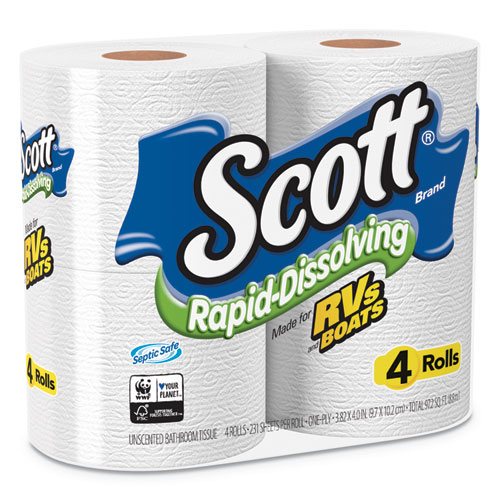
The Art of Crafting Paper: Unveiling the Secrets of Paper Manufacturing
Paper manufacturing is one of the oldest and most refined crafts known to humankind. From a simple sheet of paper to the intricate designs found in various products, the art of crafting paper is a delicate and fascinating process. In this comprehensive guide, we will unravel the secrets of paper manufacturing, taking you on a journey through the various stages involved in creating this essential everyday material.
From humble beginnings as pulpy wood fibers, to the final smooth and versatile paper products that fill our everyday lives, the process of creating paper requires precision, skill, and a deep understanding of the materials involved. Through a series of intricate steps, the transformation begins, with raw materials being carefully selected and prepared for their journey towards becoming a finished product. Whether it’s the manufacturing of regular paper or the specialized process behind producing toilet paper, the principles and techniques remain similar, yet tailored to meet distinct needs.
So join us as we delve into the world of paper manufacturing, exploring the machinery, methods, and meticulous attention to detail that go into creating this remarkable material. Gain insights into the complexities of making something seemingly ordinary, yet indispensable to our daily existence. From the timeless beauty of handcrafted paper to the relentless efficiency of modern paper mills, this guide will equip you with a comprehensive understanding of the art and science behind paper manufacturing. Prepare to be amazed as we unveil the hidden secrets of this essential craft.
The Paper Manufacturing Process
The process of manufacturing paper involves several intricate steps that transform raw materials into the versatile product we all know and use. From humble beginnings to its modern industrial scale, paper production has evolved over centuries to meet the growing demands of a paper-dependent world.
Raw Materials Preparation: The first step in the paper manufacturing process is the preparation of raw materials. Wood pulp, recycled paper, or a combination of both are commonly used. In the case of wood pulp, trees are harvested and debarked before being converted into wood chips. These chips are then mechanically or chemically pulped to break down the wood fibers into a fine pulp suitable for papermaking. Recycled paper, on the other hand, undergoes a process of sorting, cleaning, and de-inking to remove impurities and prepare it for reuse.
Pulp Treatment: Once the raw materials are ready, the pulp undergoes further treatment to optimize its properties for papermaking. This may involve refining, where the fibers are mechanically or chemically treated to improve their bonding ability. Additives such as fillers, dyes, and sizing agents are often introduced at this stage to enhance the paper’s strength, color, and resistance to water or other substances.
Sheet Formation: With the pulp suitably treated, the next step is forming sheets of paper. This is typically achieved through a process called sheet formation, where the pulp is diluted with water to create a slurry-like mixture. This mixture is then poured onto a wire mesh conveyor known as a Fourdrinier or cylinder mold. As the water drains away, the fibers on the wire mesh begin to bond together, gradually forming a continuous sheet of wet paper. This wet sheet is then pressed to remove excess water and promote further bonding between the fibers.
By understanding the intricacies of the paper manufacturing process, one gains a newfound appreciation for the everyday product that plays an essential role in our lives. From bathroom tissue to fine writing paper, the journey from raw materials to finished product is a testament to the artistry and ingenuity involved in crafting this versatile material.
Crafting Quality Toilet Paper
Toilet paper is an essential everyday item that we often take for granted, but making high-quality toilet paper involves a precise and meticulous process. In this section, we will delve into the art of crafting quality toilet paper and explore the secrets behind its manufacturing.
Choosing the Right Raw Materials:
The first step in crafting quality toilet paper is selecting the right raw materials. Softwood and hardwood fibers are commonly used, with softwood fibers being preferred for their strength and durability. These fibers undergo a rigorous refining process to ensure that the resulting paper is soft yet sturdy. Additionally, the addition of additives like wet strength resins can enhance the strength and absorbency of the toilet paper.The Papermaking Process:
Once the raw materials are ready, the papermaking process begins. The fibers are mixed with water to form a pulp, which is then spread evenly onto a wire mesh screen. This screen helps to drain excess water and allows the fibers to bond together to form a sheet of paper. The sheet is then pressed and dried to remove remaining moisture.
Toilet Paper WholesaleEnhancing the Texture and Softness:
Crafting quality toilet paper goes beyond simply manufacturing a sturdy product. Texture and softness play a crucial role in ensuring a comfortable user experience. Therefore, manufacturers often incorporate processes like embossing or lamination during the papermaking process to enhance the texture and create a softer feel. These techniques create those familiar patterns and add a touch of luxury to the final product.

Crafting quality toilet paper is a skill that combines expertise, attention to detail, and an understanding of consumer needs. By carefully selecting the raw materials, optimizing the papermaking process, and focusing on texture and softness, manufacturers can produce toilet paper that not only meets our everyday needs but also enhances our comfort and well-being.
Sustainable Practices in Paper Manufacturing
Sustainable practices in paper manufacturing play a crucial role in preserving our natural resources and reducing the environmental impact of the industry. To engender a more sustainable future, paper manufacturers are implementing a range of innovative techniques and strategies.
Firstly, one of the primary focuses in sustainable paper manufacturing is the responsible sourcing of raw materials. By ensuring that the wood fibers used in the papermaking process are derived from sustainably managed forests, manufacturers can help maintain the ecological balance of our planet. This involves partnering with organizations that promote responsible forestry practices and obtaining certifications such as the Forest Stewardship Council (FSC) certification.
Secondly, another important aspect of sustainable paper manufacturing lies in optimizing energy consumption and reducing greenhouse gas emissions. Paper mills are investing in energy-efficient technologies to minimize their carbon footprint. By adopting cleaner energy sources such as biomass or solar power, manufacturers can greatly reduce their reliance on fossil fuels and decrease their environmental impact.
Lastly, water conservation and waste management are key considerations in sustainable paper manufacturing. Efforts are being made to recycle and reuse water used in the papermaking process, minimizing water consumption and reducing the strain on local water sources. Additionally, implementing effective waste management systems helps in the proper disposal and recycling of paper waste, reducing landfill waste and contributing to a more circular economy.
In conclusion, sustainable practices in paper manufacturing are vital to protect our environment and secure a greener future. Through responsible sourcing of raw materials, optimizing energy consumption, and water conservation, manufacturers can contribute to the preservation of our natural resources and reduce their ecological footprint. Embracing environmentally friendly methods not only benefits the industry, but also ensures the long-term well-being of our planet.



